Travelling around Peru by bus is definitely the way to go if you want to save money (versus vehicle rental or flying) and also admire the scenery as much as possible.
It should be said that due to the mountainous terrain, some trips can be excessively long; for instance, we suggest flying between the capital Lima and the city of Cusco near Machu Picchu (avoiding a 22 hour overland trip). However, bus travel is generally the most comfortable option.
If you’re wondering how to travel independently in Peru using public transportation, we have a complete guide to all the transport options that exist, but here we’ll focus on tips for traveling by bus.
What do buses cost in Peru?
Taking buses (long-distance coaches) in Peru is not only is it the cheapest transportation option, but you’ll also find an abundance of good providers serving the same routes (this also helps to drive down the price).
For example, a one-way bus from Lima to Arequipa will cost you around $20 USD (roughly 80 Soles), whilst a flight between the two costs an average of $40 USD (160 Soles – excluding extra fees for baggage).
Some of the best Peruvian bus providers include Oltursa and Cruz del Sur, although you can also find cheaper ones within the terminal (they don’t always market themselves online).
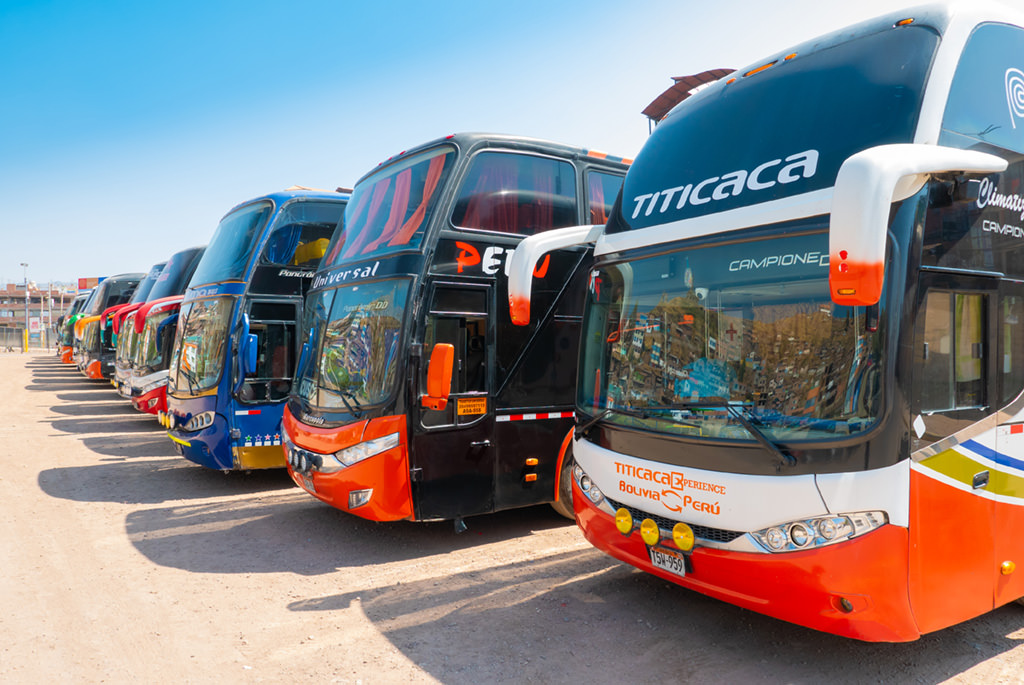
Seat options
Buses in Peru are usually of great quality. Since the major cities in Peru are quite spread apart, the coach buses are generally very comfortable and fitted for long journeys.
You typically have the choice from one of these classes:
Regular – A normal seat with only a slight recline.
Ejecutivo or Cama – This is a little more pricey but has a 180° reclining seat. Best for long journeys or overnight trips.
There is also often semi-cama which is a seat class in between regular and cama. They don’t recline all the way but they’re a bit better than a regular seat for taking a nap.
How to book buses in Peru
There are two main ways of booking buses in Peru.
The first option is using online sites like RedBus or 12Go, where you can easily pay with your card and get tickets sent to your phone. Not only is it easier as everything is clearer and in English, you’ll also be able to plan in advance and arrive at the terminal without needing to rush.
You can easily search for bus tickets in Peru at 12Go:
The disadvantages of this option are that sometimes you’ll pay a bit more. You also won’t have access to several companies that don’t market themselves online (which means you’ll have fewer routes and timetables available). But for the major routes in Peru, booking online is quite convenient and reduces the chances of not getting a seat.
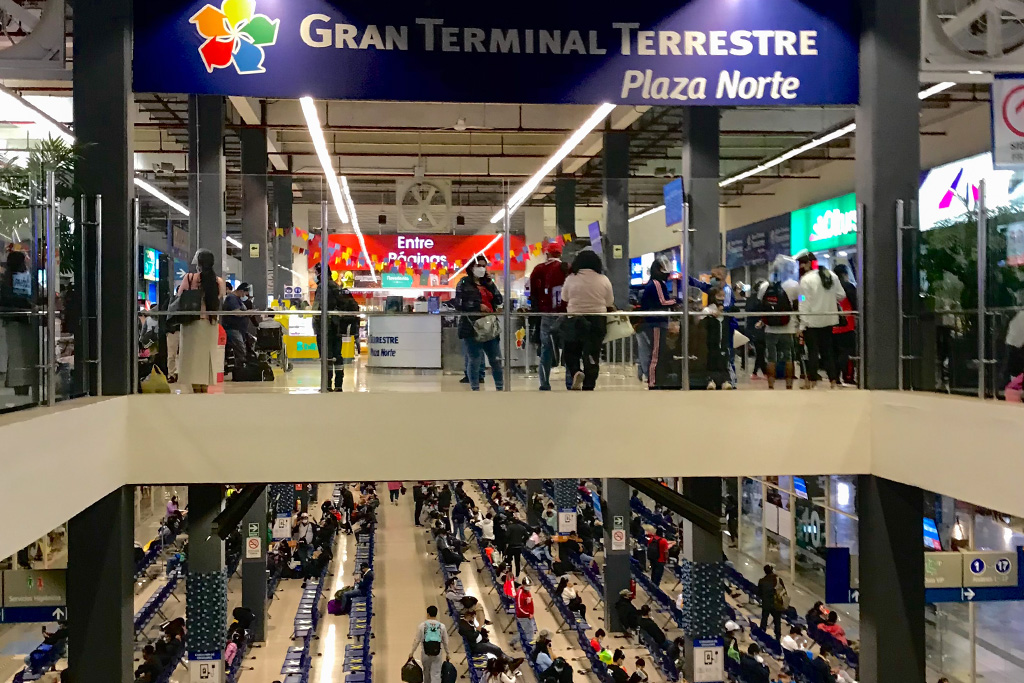
The second option is to buy your ticket at the bus terminal. There will be many counters, so you’ll need to head to a counter that serves your destination. This is the cheapest option by far and if your times are flexible then the costs can be further reduced.
However, for this method, you’ll need to know some Spanish (unless you are fine improvising) and Peruvian bus terminals can get quite wild and hectic at times.
Here are some Spanish phrases that can come in handy:
I want to go to Cusco = Quiero ir a Cusco
How much is it? = ¿Cuanto cuesta?
Do you offer luxury seats? = ¿Tienes asientos ejecutivos?
How many hours is the trip? = ¿Cuántas horas es el viaje?
Touristy vs. more remote routes
When it comes to travelling around Peru, it’s best to split the South American nation into two different parts:
The south is the more popular area which includes Cusco, Lima and Lake Titicaca, and I highly recommend using the bus to get around here. This is because the providers are reliable, and also as there are many frequent departures daily. You can check them and pre-book your tickets at RedBus or at 12Go.
The north is more difficult, given it’s less touristy and remote in many places too. You’ll most likely have to book buses within the terminal or even take flights between different areas, especially those that are located deep in the Amazon.
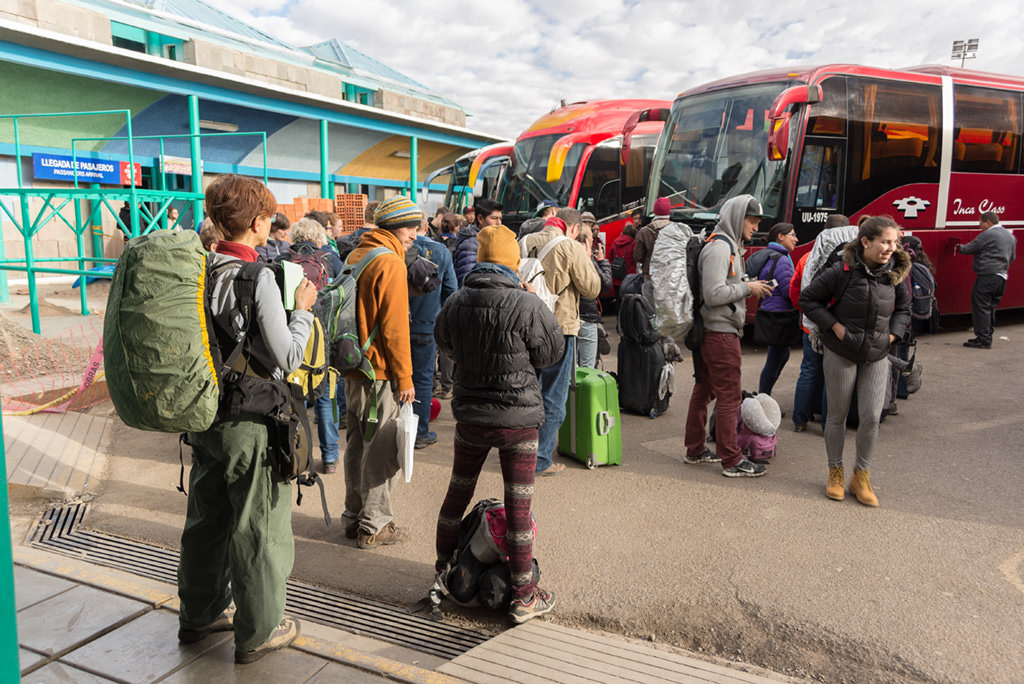
Tip for during the journey
The major downside with using buses in Peru is that distances can be huge, so you’ll need to get used to many 8+ hour buses along your journey.
Some trips can even be as long as 24 hours(!), such as from Lima to Cusco as you navigate through the spiralling Andean peaks along the way.
Be sure to pack something warm! The majority of buses tend to keep the air conditioning on regardless of whether it’s day or night. On a short trip this is okay, but it can get pretty uncomfortable and chilly at night. If on an overnight bus or long-haul, make sure to bring a jumper and/or blanket on board.
It’s common for music or movies on DVD to be played non-stop on coaches in Peru. The Andean panflute tunes can be fun at first but can also get annoying after several hours. Bring earplugs or headphones when you want to have something else to listen to.
On long trips, it’s best to buy lots of snacks, food and water at a local shop or the bus station prior. While you will get some vendors hop on and off from time to time, it’s still better to come prepared.
Another important consideration is purchasing Coca Leaves or Soroche Pills (altitude sickness medicine). These are especially needed when travelling around the high-altitude mountainous regions of the Andes, such as around Cusco or Huaraz. They can help alleviate headaches or nausea which are common when travelling at these higher altitudes.
Some links may be affiliate links, meaning I may earn commission from products or services I recommend. For more, see site policies.
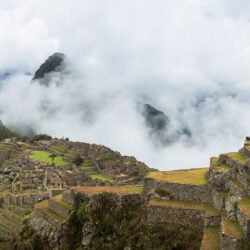
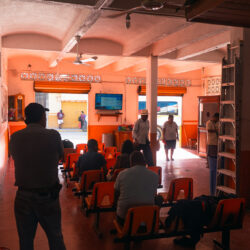




0 comments
Leave a comment
Your email address will not be published. Comments are manually moderated.